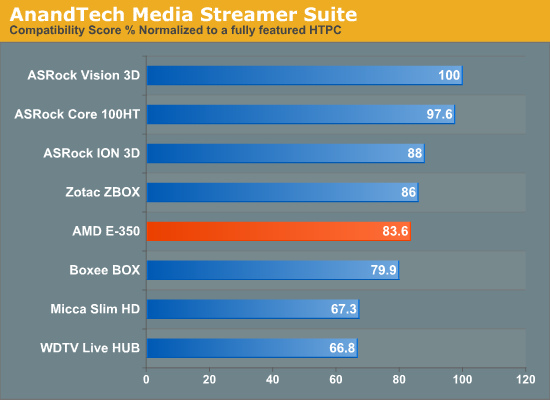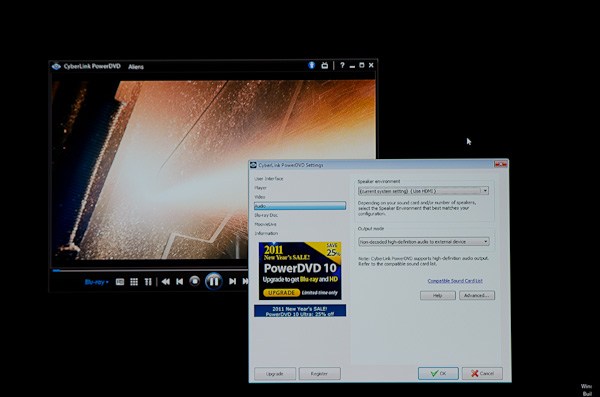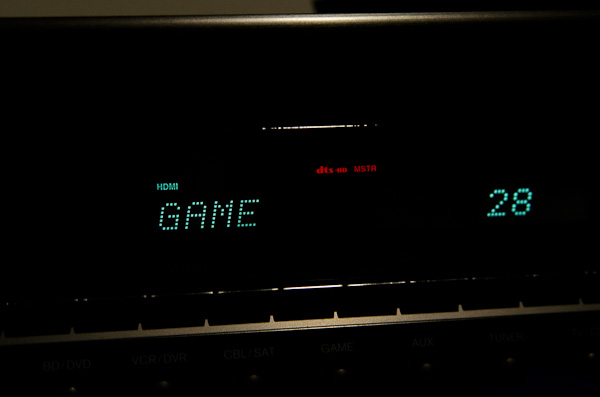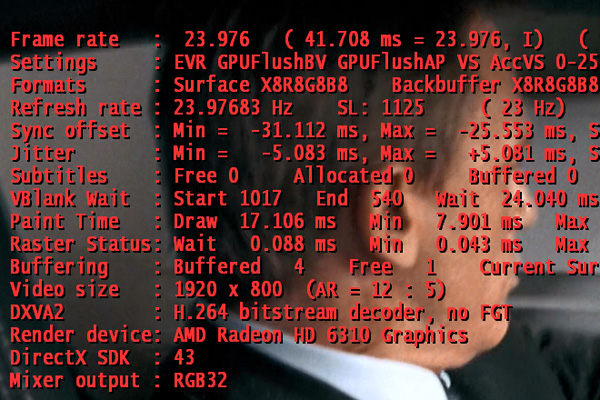The Brazos Review: AMD's E-350 Supplants ION for mini-ITX
by Anand Lal Shimpi on January 27, 2011 6:08 PM ESTVideo Decode Capabilities: Is Brazos the New ION?
While Atom may have been the right product at the right time, it was a very conservative architecture paired with a very conservative platform. For netbooks and nettops Intel chose to assume no risk at all, pairing Atom with the proven 945 chipset. As a result, it left a lot of room for innovation - something NVIDIA saw and capitalized on with ION.
While VIA created the mini-ITX form factor, it was really NVIDIA that made it interesting. The first mini-ITX ION platforms gave you almost everything you needed to build a fully capable HTPC. For video playback, with NVIDIA’s GPU (or at least its fixed function decode pipeline) doing the heavy lifting, the fact that you had an anemic Atom a couple centimeters away didn’t matter. The problem with ION is that it had no future. Without a DMI license, NVIDIA would not be able to build future versions of ION for Atom’s successors. Even after the settlement it’s unlikely we will ever see modern versions of ION, especially considering that Intel’s 2011 Atom platform (Cedar Trail) will finally integrate H.264 decode acceleration in Q4.
Where Intel is conservative, AMD will innovate. Brazos adds a number of advantages from a media standpoint over Atom. There’s native HDMI support and a full implementation of AMD’s UVD3 decode engine supporting hardware H.264, VC-1 and MPEG-2 acceleration. Although both of these advantages are also enjoyed by ION the next feature isn’t. Brazos supports Dolby TrueHD and DTS-HD MA bitstreaming over HDMI. From a feature standpoint, Brazos is even more complete than ION.
I ran MSI’s Brazos board through our Media Streaming compatibility suite. Below is Brazos’ compatibility score compared to the other devices and HTPCs we’ve put through the suite:

Failed Tests
- 1080p60 60 fps L5.1 H.264
- L5.1 H.264 (16 reference frames)
- FLAC, ASS Subs - High CPU Utilization
- HD Real Media
- Deinterlacing
Numerically, Brazos actually falls behind ION. Allow me to explain why. Our Media Streaming suite tests virtually everything you might throw at a HTPC. When it comes to the most commonly found content, Brazos excels. It can handle Blu-ray discs (although there’s no Blu-ray 3D support), it can deal with 1080p x264s commonly found online and it even accelerates Flash video (more on this later). Brazos’ UVD3 however is tied to clock speed, and the GPU clock of the Radeon HD 6310 is pretty low at 500MHz. As a result, Brazos fails certain tests. The platform is incapable of accelerating and playing back 1080p60 H.264 video. Very little content falls into this category, however if you want to play it you can’t on Brazos. The good news is 1080i60 works just fine.
Brazos’ GPU also fails all of our deinterlacing tests, something we noticed in reviews of AMD’s entry level GPUs. The higher end models don’t have an issue here but the lesser equipped models do. Again, chances are that you won’t want to watch interlaced content on your Brazos HTPC so this is likely not a big issue.
The other shortcomings are videos with components that aren’t accelerated by UVD3. For example, HD Real Video chugs on Brazos as does our heavy FLAC + ASS subs test. If you’re playing non-3D Blu-ray content or 1080p24 x264s you find on the web, Brazos will easily fit the bill. It’s the more eccentric content that you’ll run into CPU limitations with.
Since the Radeon HD 6310 is derived from AMD’s desktop GPUs we get full 23.976 fps support when you select 23Hz in AMD’s Catalyst driver:
Selecting 24Hz yields a 24.000Hz refresh rate.
As I mentioned earlier bitstreaming both TrueHD and DTS-HD MA are supported over HDMI:














176 Comments
View All Comments
flyck - Friday, January 28, 2011 - link
at idle the SB cpu uses 30% more power (or 4W) (2400S), during playback the difference between the cpu will also be around 1W.the chip consumption is however not known.
duploxxx - Friday, January 28, 2011 - link
Nice review, always a good review from Anandtech, thxFor now brazos could use only another cpu speedbump to totally destroy all atom based solutions and even more get into the ULV regions. A wider APU platform offer (different clockspeeds) would be better though.
To crush next gen Atom I think AMD knows what to do, update like 69xx series on uarch for gpu, add higher speed or more core in the new 28nm package all combined with turbo modes by the end of this year and Intel will never have a chance unless they bring a new uarch.
bjacobson - Saturday, January 29, 2011 - link
meh, they can just compete with the ULV Pentiums.To me that's what Brazos is competing with performance wise-- of course it stomps Atom...so what's next? ULV chips...and it has a much harder time with them.
beginner99 - Friday, January 28, 2011 - link
...as mentioned before I do not see the benefit of playing MW 2 at 20 fps on a 1024x768 resolution. Who will do that? probably no one because it is still unplayable.I mean this thing is nice and better than Atom (assuming same price) but I think the GPU is a waste of die space. Why not beef up the decode engine? I mean this thing will be used mainly for media stuff and not for gaming. I mean not being able to play 1080p youtube perfectly is already fail for a nettop/htpc because that is a very, very likely usage scenario (1080p tv or screen).
More fixed function hardware fro media would be better maybe even something like QuickSync so you could actually trans-code on your htpc. Or said otherwise functionality you get with these broadcom cards, which quite a few atom system have.
I would still 100% choose this over Atom.
nitrousoxide - Friday, January 28, 2011 - link
Then it won't be an APU :)And AMD doesn't have smaller GPU...HD5400 Cedar is the smallest available design AMD has lol
While it can't run Modern Wardare 2, I'm quite satisfied with the fact that it can run L4D2, Warcraft 3, Starcraft 2 and I can even play Command and Conquer Red Alert 3 tuned to "medium".
sebanab - Monday, January 31, 2011 - link
I also think the 3D functions of the chip might as well not be there at all.But they should come in handy for Aero effects in Win7 and why not , Win8.
Shadowmaster625 - Monday, January 31, 2011 - link
1080p youtube is just too slow to be practical for anything other than watching trailers for the really big movies that come once a year, like Avatar. Most people's internet connections simply cannot keep up to stream realtime 1080p. And even if you did have the bandwidth, that dont mean that youtube is going to have it.720p is much more reasonable, though even then comcast 20mbps + youtube have trouble keeping that pipe filled most of the time. Most of the time I go with 480p just because less wait is more important than the added quality.
krumme - Friday, January 28, 2011 - link
I like the review, epecially the new HD bm and the recommandations. Looking at the hd bm themselves one had to wonder if 7200rpm was not enough for the bobcat? but i guess there is room for personal interpretation. I think Anand really likes his ssd more than i do :)I still feel the emphasis on multithreaded and heavy workloads is a little to much, and the same for the emphasis on the gaming side. But ofcourse there must be some readers that will use this for for gaming.
I hope AMD get this bobcat on lower leaking gf 32nm process, so we can have even better battery life.
bjacobson - Saturday, January 29, 2011 - link
You know I've found my 160GB 5400RPM drive to be plenty fast for my Atom. I doubt a 7200RPM would be too terribly much of a bottleneck. Might impact battery life though compared with SSD on a laptop.I found the multi-threading very useful-- it showed us that even in perfect-scalable applications (Cinebench), the e350 still stomps a dual core dual threaded Atom. That's the conclusive evidence I was looking for that this is a better chip.
macs - Friday, January 28, 2011 - link
My thought:- AMD E-350 itx board: 100-130 $
- Intel Sandy Bridge Pentium G620T (rumored release date 2/27/11, dual core, 35w TDP) 70$ paired with a H67 ITX board like the Foxconn one (75$) TOT:145$
I suspect that we will have similar power cosumption (probably Idle is even better for Intel) but the performance are way better in Sandy Bridge and totally worth the 10/50$ price difference.
Am I wrong? (sorry for my poor English)